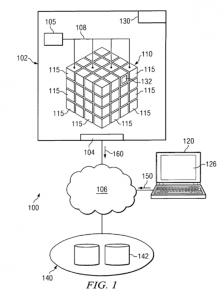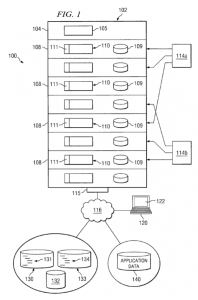“The order is the likely conclusion to a case that became an important part of the debate on proper venue in patent cases after the U.S. Supreme Court’s decision in TC Heartland.”
On April 15, U.S. District Judge William Conley of the Western District of Wisconsin issued an opinion and order in Raytheon Company v. Cray, Inc. granting summary judgment of non-infringement to defendant Cray on two supercomputer patents that had been asserted by Raytheon. The order is the likely conclusion to a case that became an important part of the debate on proper venue in patent cases after the U.S. Supreme Court’s decision in TC Heartland, and aspects of how this case played out after venue was transferred point to the importance of that particular decision on U.S. patent litigation.

Fault Tolerance and Recovery in a High-Performance Computing (HPC) System.
Judge Conley granted summary judgment of non-infringement to Cray over Raytheon’s assertion of claims from two patents:
- U.S. Patent No. 7475274, Fault Tolerance and Recovery in a High-Performance Computing (HPC) System. It claims a system including a fabric coupling a plurality of nodes in an HPC system, storage coupled to the fabric and accessible by each node and a manager that can discontinue a faulty node and boot an executing host from the faulty node at a free node.
- U.S. Patent No. 8190714, System and Method for Computer Cluster Virtualization Using Dynamic Boot Images and Virtual Disk. It claims a method for selecting a distributedapplication, retrieving a policy associated with the application, dynamically selecting a node, resetting a boot image of the selected node and executing a portion of the application on the reset node using an associated virtual disk image.
Impact of TC Heartland
This case stems back to 2015, when a Raytheon licensing representative sent a letter to Cray regarding the infringement claims in March of that year. In July, Cray filed an action in the Western District of Washington seeking declaratory judgment of non-infringement on nine Raytheon patents. Raytheon offered a covenant not to sue on five patents and asserted the other four in a lawsuit filed in the Eastern District of Texas in late September 2015.

System and Method for Computer Cluster Virtualization Using Dynamic Boot Images and Virtual Disk.
While the case progressed, the Supreme Court handed down its unanimous decision in TC Heartland LLC v. Kraft Foods Group Brands LLC, which held that the patent venue statute codified in 28 U.S.C. §1400(b) was to be more narrowly interpreted regarding judicial districts where defendants could be sued for patent infringement. Although TC Heartland itself didn’t involve a case from Eastern Texas, much was made about the potential effects of the Supreme Court’s decision on patent filings for that district, which was renowned for routinely seeing one-third of all U.S. patent infringement lawsuit filings in the years leading up to the TC Heartland decision.
Cray’s post-TC Heartland challenge to venue in the case brought by Raytheon wound up being an important litmus test regarding how that case was going to be interpreted by judges in Eastern Texas. In June 2017, U.S. District Judge Rodney Gilstrap issued a memorandum opinion and order which denied Cray’s motion to transfer venue, finding Eastern Texas to be a proper venue for the case after developing and administering a four-factor test to determine that Cray both committed acts of infringement and had a regular and established place of business in the district. This finding was based in large part upon the use of accused Cray products by the University of Texas, an act of infringement, and the business activities of a Cray account manager living within the district, establishing a regular place of business. Cray appealed this finding to the Court of Appeals for the Federal Circuit which issued a September 2017 decision in In re: Cray Inc. holding that Judge Gilstrap’s test wasn’t compliant with the statutory language and that the district court abused its discretion in denying Cray’s motion to transfer.
The Material Effect of the Venue Transfer in Raytheon v. Cray
Raytheon v. Cray was then transferred to the Western District of Wisconsin, where Cray operates manufacturing facilities, in May 2018 and it appears as though the transfer had a material effect on the case. Post-transfer, Raytheon withdrew its patent infringement claims regarding two patents, leaving the ‘274 and ‘714 patents as the only patents remaining in the case. It’s possible that the transfer of venue allowed the case to be more thoroughly reviewed by a judge who could take more time to explore the issues presented without having to worry about processing an overflowing docket of patent cases. Western Wisconsin has three U.S. district judges instead of the eight district judges sitting in Eastern Texas. Data collected from Lex Machina shows that there are 20 patent cases open in Western Wisconsin as of this writing compared with 506 such cases open in Eastern Texas, making the Western Wisconsin patent case docket much less cumbersome, even given the fewer district judges there.
Despite the presence of software in the technology claimed by both patents asserted in the case, Cray didn’t move to have the claims invalidated under 35 U.S.C. §101 as being directed towards an abstract idea. A closer look at either patent reveals aspects of the claimed technology that may have helped them survive scrutiny under Section 101. The ‘714 patent, which claims a method, is purely a software patent, but it specifies a very particular algorithm enabling capability for a computing environment to provision nodes with the proper operating system to run a distributed application. Such an algorithm was highly specific and could likely have satisfied the Alice/Mayo framework’s requirement of providing an inventive step. The ‘274 patent also claims a software system, but it included a particular hardware configuration that arguably goes beyond a recitation of general computing architecture that tends to trigger invalidation under Section 101.
In fact, the hardware limitations found in the ‘274 patent played a large part in Cray’s success on its motion for summary judgment of non-infringement. Cray pointed to testimony from Raytheon’s expert witness that indicated that management nodes, as claimed by the ‘274 patent, weren’t required to be a single physical node but could be distributed across many nodes including service, compute and input/output nodes. The court found that the accused Cray products didn’t meet the “plurality of hosts each executable at any of the nodes” limitation as the operating system versions known as Computer Node Linux (CNL) and Cray Linux Environment (CLE), the “hosts” in the claim, aren’t “each executable at any of the nodes” because CNL wasn’t executable at the service nodes. Raytheon had contended that mentions of “management nodes” in the ‘274 patent necessitated that the “nodes” in the claim limitation were compute nodes, but its own expert’s testimony undermined that argument.
Although Judge Conley did find a factual dispute as to whether accused Cray products met at least one of two limitations found in the asserted claims of the ‘714 patent, Cray ultimately won summary judgment by arguing that the accused products didn’t perform the limitations in the specific order required by the claims. Citing independent claim 29 of the ‘714 patent, Cray convincingly argued that limitations such as “select a distributed application” must come first because subsequent terms referred to “the distributed application.” Likewise, the court found that mentions of “the selected node” and “the retrieved policy” were steps that had to take place after a node was selected or a policy was retrieved.
Ultimately, Raytheon v. Cray won’t be remembered so much for Cray’s successful defense against patent infringement claims as it will be for serving as an early indicator of the impact on TC Heartland on patent cases in U.S. district court. Although some aspects of the decision are still open for interpretation, such as whether a server’s physical location constitutes a regular and established place of business if infringing acts are committed on the server, In re: Cray proved that TC Heartland did indeed have the impact on Eastern Texas’ patent docket that many believed it would.

![[IPWatchdog Logo]](https://ipwatchdog.com/wp-content/themes/IPWatchdog%20-%202023/assets/images/temp/logo-small@2x.png)

![[[Advertisement]]](https://ipwatchdog.com/wp-content/uploads/2018/08/Patent-prosecution-800.png)
![[Advertisement]](https://ipwatchdog.com/wp-content/uploads/2024/04/Artificial-Intelligence-2024-REPLAY-sidebar-700x500-corrected.jpg)
![[Advertisement]](https://ipwatchdog.com/wp-content/uploads/2024/04/UnitedLex-May-2-2024-sidebar-700x500-1.jpg)
![[Advertisement]](https://ipwatchdog.com/wp-content/uploads/2024/04/Patent-Litigation-Masters-2024-sidebar-700x500-1.jpg)

![[Advertisement]](https://ipwatchdog.com/wp-content/uploads/2021/12/WEBINAR-336-x-280-px.png)
![[Advertisement]](https://ipwatchdog.com/wp-content/uploads/2021/12/2021-Patent-Practice-on-Demand-recorded-Feb-2021-336-x-280.jpg)
![[Advertisement]](https://ipwatchdog.com/wp-content/uploads/2021/12/Ad-4-The-Invent-Patent-System™.png)






Join the Discussion
No comments yet.